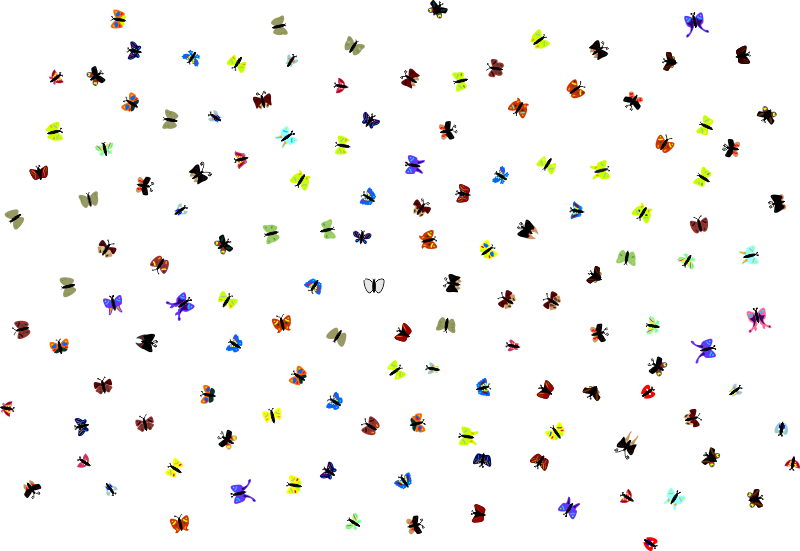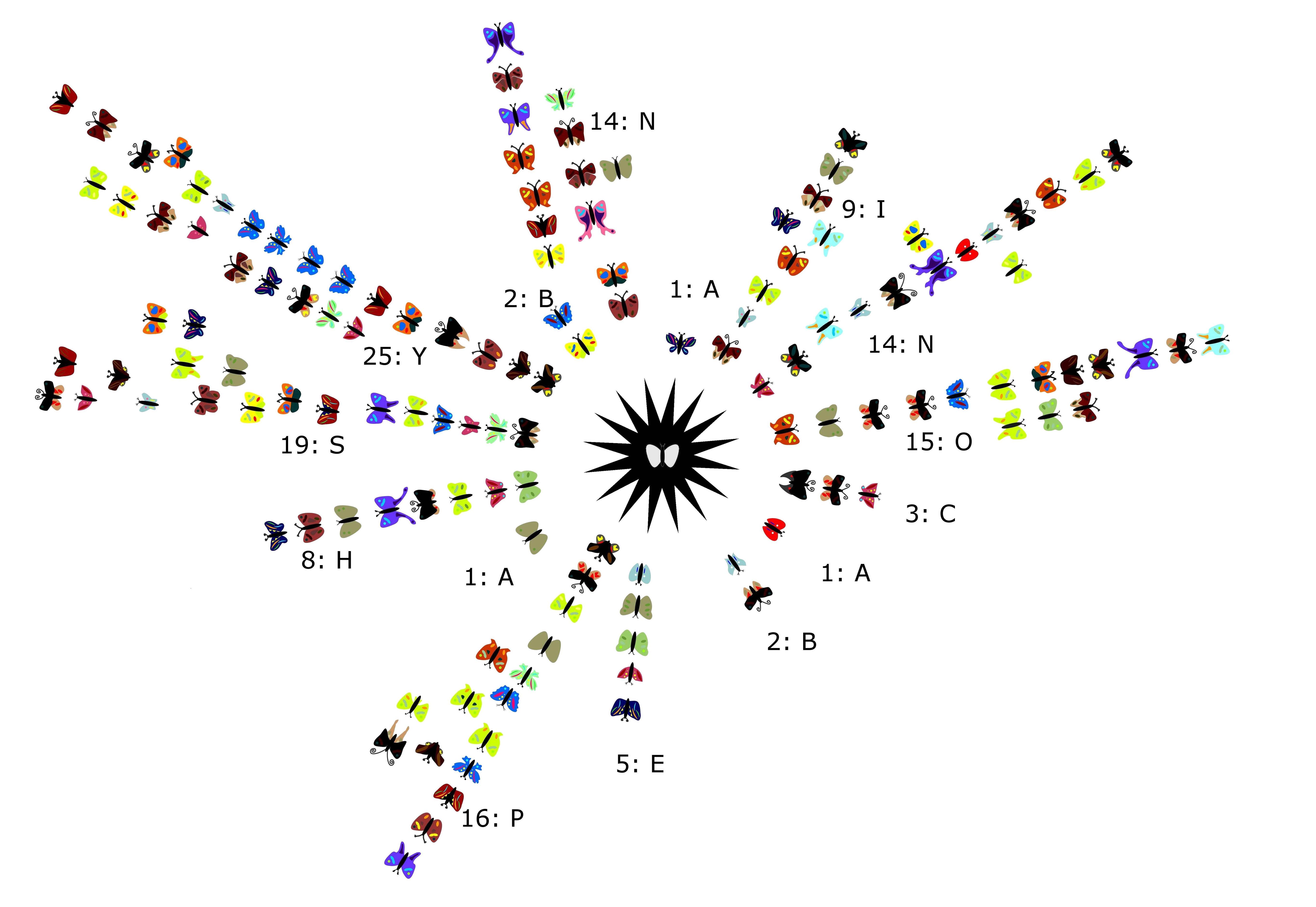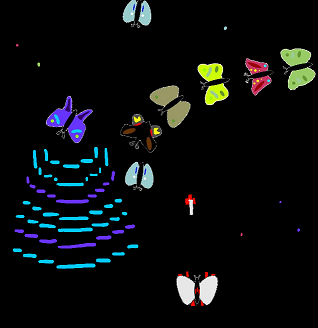This puzzle belongs to the puzzle series: hyper-modern art
The two friends in the gallery of Hyper-modern art are still discussing.
"You know what, to certain extent I start enjoying this Hyper-modern art, but I still think it lacks something important."
"And what should that be, my friend?"
"Beauty. Aesthetics. It is all well and good that the observer has to fully engage for deeper understanding, but I still would like to, well, like an image. It should be pleasing to watch."
"Hmm, yes, I get your point. But maybe the next example is more to your liking."
They move on to the forth room of the gallery, where a gigantic painting of 11x16 metre fills the whole side of the room.
"See what we have here: The painting is called 'Nature tells a story', and I think it is rather pleasing, don't you?"
"Well, it for sure is impressive... And yes, it is also nice. But what is the story nature wants to tell us here?"
"See, now we need our HUD again..."
 Full resolution image, 1.3Mb, 6582 x 4539 pixels
Full resolution image, 1.3Mb, 6582 x 4539 pixels
The goal of the puzzle is to find the message, this painting is telling us. This message is written in English and consists of five words. The puzzle will likely require some patience and work, and it does require the full-resolution image provided by the link.
While the full resolution is needed to see all details, the puzzle does not require any digital information. You can print the image and still solve it from that.
Bonus: An additional message is hidden in the image. This message is a clue for the actual puzzle. What is the message?
Hints
Hint 1:
You need a hint? Count!
Hint 2:
You think the flying direction of butterflies is random? Think again!
Hint 3:
A single butterfly (in one direction). But two?
Hint 4:
Have you taken a close look at hint 3 above?







